SEO strategies are focused on ranking higher in search engines. One of these techniques is on-page SEO optimization. SEO experts know how important it is to prioritise on-page SEO and keep it updated with the recent search engine algorithms. Focusing only on including keywords and off-page SEO does not fetch good results if you don’t pay attention to on-page SEO.
What is On-Page SEO?
On-page SEO involves optimizing webpage content for search engines to improve rankings. It includes using relevant keywords, creating quality content, and ensuring your site is user-friendly. This helps your website show up in search results, making it easier for people to find you online.
There are many on-page SEO techniques that come into play to make this possible. All these techniques help websites in gaining better visibility to search engine algorithms and ensure your website works at an ideal functionality. Some of these techniques include:
- Image optimization for faster page loading speeds
- Internal link building for better display of website structure to Google’s algorithms
- Technical SEO
Unlock higher rankings, quality traffic, and increased conversions through tailored award-winning SEO strategies. Elevate your web presence
by Infidigit’s SEO solutions. Unlock higher rankings, quality traffic, and increased conversions through tailored award-winning SEO strategies.![]()
![]()
Why On-page SEO is Important
On-page SEO helps search engines understand your website and identify if it’s relevant to users’ searches and queries. Search engines have become more sophisticated over the years which has increased the need to focus on content relevancy in SERPs.
Google’s algorithm focuses on understanding what users are searching for and delivering the most relevant results to the user searches. Adapting according to these ensures that search engines rank you higher on SERPs. You can do this by ensuring that your website and its content are optimized according to the latest algorithm updates and focus on users needs.
Below is the On-Page SEO Activities List:
- Content Optimization
- Title Tag Optimization
- Meta Description Optimization
- URL Structure Optimization
- Header Tag Optimization (H1, H2, H3, etc.)
- Image Optimization
- Internal Linking
- External Linking
- Mobile Optimization
- Page Speed Optimization
- Structured Data & Schema Markup
How to create SEO content in 2025
Before we get into the SEO technicalities and optimising keywords, remember that content is still the king. As mentioned before, Google and other search engines pay a lot of attention to the content and thus your focus should be on creating amazing content that people would want to read. To create SEO content, you need to focus on these four things along with your keywords.
1. Relevant content
Relevancy is unarguably the most crucial part of SEO content. Aligning your content with your audience’s search queries increases your chances of getting noticed. Google understands search intent and thus the type of content you put, the format you choose matters a lot in SEO.
2. Unique Content
Serving what the user is looking for is crucial for search engines. If your content is not bringing something new to the table, you will fail to attract an audience and search engines.
3. In-depth content
When someone searches on the web, they look for complete and useful information. If your content fails to deliver in-depth information on the topic, they most likely wander to some other site for the information. Good content covers all the aspects of the topic and that is what the search engines also look for.
4. Clarity
Clarity in the content is another important trait of good content creation. A clearly designed and written piece attracts the readers because they can quickly skim through it. When creating content for your website use bullets, subheadings, images, easy to understand language, and short sentences.
How to optimize your content
Creating content that readers and search engines are looking for is the hardest part of SEO. After that, all that’s left to do is to optimize the technical details on your website like the URLs and meta tags, etc. Here are a few points on which you should keep a checklist for:
- Including keywords in the title. This is the most conventional and important SEO technique. Keep your title simple, natural, use conjunctions, and ensure it makes sense. If your keyword does not fit in the title, use a close variant of the keyword.
- Use descriptive and short URLs because this helps the readers to understand what the page is about. You can optimize your URL by adding target keywords in the URL slug and informing your visitors about your page.
- Always optimize your title tag and create short titles. You can use your post title too for your title tag.
- A compelling meta description is important for enticing readers and gaining more clicks even though they don’t contribute to ranking much. You should use this space to expand your title tag, show your intent and include keywords.
- Optimizing images is the next important step. Always name your images appropriately and use descriptive alt texts. Compress your images so that they load faster.
- Link relevant external and internal links to help the visitors with everything they might be interested in or are looking for. Don’t overdo it and link anything just anywhere. Only link resources that make sense to your page or product or service.
Advanced on-page optimization techniques in 2025
Advanced on-page SEO optimization helps you to push things higher. Here are a few advanced on-page SEO techniques that you can use.
Check out this video to find out the Top 13 On-page SEO Techniques

1. AI Overview
AI is helping search engines identify and display concise, authoritative answers directly at the top of the search results. These snippets, often extracted from well-structured content, are meant to provide users with quick answers without requiring them to click on a website.
2. Featured snippets
Featured snippets are a type of search engine result that appears at the top of the search results. The snippet answers the queries and the question with a short excerpt from the top-ranking articles.
Snippets can help you get to the top of the search results. Look for snippets of the same keyword and optimise your content for keywords and style that you see is followed by top-ranking pages. Also, check how your competitors are addressing the queries and how they have answered the query.
3. Get rich snippets with schema markups
Additional information below the title and URLs are called rich snippets like ratings and other useful information. Google pulls this information or the data from the schema markup page. It is basically a code, a semantic vocabulary that is placed on the website from which the search engines pull informative results for users.
4. Improve the relevance of the topic
We have stressed a lot the importance of relevance in links and content. It is important to note that Google measures a page based on the information it provides to its users. So, your content should be comprehensive, relevant and provide extra information that the user might need.
You can also check why are you not ranking on search engines by comparing relevant keywords and analysis using the:
‘Also talk about’ report: This shows phrases and keywords that are frequently mentioned in the top 100 pages relevant to your niche.
Running a TF-IDF analysis: Term Frequency-Inverse Document Frequency or TF-IDF is a statistical measure of the relative importance of a word or phrase in a document. You can use this to compare how your top-ranking competitors use the keywords and what they are doing differently.
Top On-Page SEO Factors That Affect Webpage Ranking
When it comes to offering a seamless and memorable experience to users on your site, certain on-page SEO factors are key. The following list will help you be at the top of your on-page SEO game:
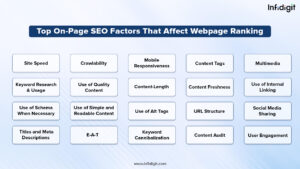
-
Site Speed
We live in an age of instant gratification and the same applies to websites. Recent articles indicate that even a second’s delay in loading a webpage can lead to a fall in conversions by 7%. You can check your website’s performance in the speed department by using the very handy Google PageSpeed Insights tool. If you come up lacking, you can do a variety of things to speed up your site, including employing speedy hosting, a robust CDN (content delivery network) and image compression software, minifying JavaScript, HTML and CSS resources, etc. Here is a video from Google’s Matt Cutts which stats that site speed/Page Score is important on-page SEO factor in order to achieve a higher ranking on Google SERPs

-
Crawlability
Your webpage will be of no use to you or prospective users if it cannot be discovered, crawled and indexed by search engines. And in order to ensure that there are no crawl errors, you must go through your robots.txt file to check if any important pages have been mistakenly blocked from being crawled by Google bot. The Google Webmasters tool will help you keep tabs on the health of your site and avoid such problems. Additionally, deploying structured data mark-up will help webpage crawlers understand your content better and might even earn you a rich search result. If you are receiving many backlinks to a 404 page, make sure that you do a 301 redirect to a related, relevant page in order to hold visitors’ attention and not lose any goodwill. Here is a video from Google’s Matt Cutts to understand more about Crawling the website

-
Mobile Responsiveness
Most people surf the internet through a mobile device whether it be a smartphone or tablet. Hence, it is very important to have a website that is optimized for both the desktop and mobile, especially after Google’s 2018 mobile-first indexing stance. While you must ensure that both versions of your site have exactly the same content, it is also crucial to pay attention to other minute details like not having intrusive pop-ups, links that are clustered close together or small font that is hard to read on the mobile version, and the likes. You can simply use the Google Mobile-Friendly Test tool to find out how mobile-responsive your site design is. You can read more about such technical SEO aspects in our post about it.

-
Content Tags
The title tag of your webpage is critical to its success as it is the first thing users see in Google’s search results. Make sure that you place your primary search keyword as close to the start of the title tag as you possibly can without making it seem unnatural. The meta description carries equal weightage and must contain a decent smattering of keywords that matter. Remember to keep both your title tags and meta descriptions concise, clear, relevant and well-written. While title tags must be 60 characters long, meta descriptions can be 160 characters long – if they are any longer, they will be cut off by Google and the user will not be able to see them as a whole.

Besides the afore-mentioned on-page SEO measures, ensure that your posts’ headings and sub-headings carry the H1 and H2 HTML tags respectively so that search engines understand what your webpage content is all about. Many CMS (content management systems) like WordPress have this feature built-in to their code but sometimes, heavy themes can keep it from happening. Hence, double-check your site code to ensure that your post/page has only one H1 tag and try to include your primary keyword in it.
-
Multimedia
There are many different types of information seekers or readers on the internet, including those who prefer in-depth, long-tail content that presents heaps of relevant information on a topic of choice, infographics lovers, etc. Whatever your business/brand niche, it is important to include a variety of multimedia in your content, including high-resolution videos and images. This will help you cater to a wide variety of site visitors and keep them engaged. However, you must make sure that such multimedia is optimized to suit your Google SERP rankings and web traffic needs, including using web fonts instead of embedding text within images, making important keywords part of video descriptions/transcripts and image alt text, etc.
-
Keyword Research and Usage
Keyword research is a key step in achieving unpaid search ranking success in Google’s SERPs. You can use the Google Keyword Planner to conduct thorough research on the search queries that are most popular in your domain. Make sure you also focus on ranking for long-tail keywords as they are highly specific and less competitive. LSI (Latent Semantic Indexing) keywords, i.e. search terms closely related to your primary keyword(s), are another must-include in your list of search words and phrases to rank for. Just type in your primary keywords in the Google search bar and scroll down to the end of the SERP – the ‘searches related to…’ section will offer up valuable LSI keywords options. Besides these, you can take a look at the paid ads that adorn the top portion of the SERP for more keyword ideas. Make sure to look through the top-ranking SERP content that is already available for a particular keyword and aim to author new, fresh content that is even better than it.
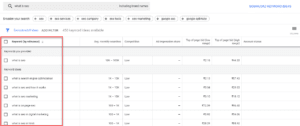
-
Use of Quality Content
Good content is the key attraction for any user. Bad content, even if infused with a lot of SEO elements, will not survive in the long run. Hence, high-quality content is one of the most important on-page SEO techniques. But what exactly makes for high-quality content? Let’s find out:
- Originality – Keep your content completely original to provide the website visitors with a fresh experience each time they visit your website.
- Thoroughly Researched Content – Make sure that the content on your website is thoroughly researched so that it can offer accurate and relevant information to visitors.
- Search Intent Fulfilment – Define the purpose of your content and ensure that it provides visitors with the solution they’re looking for.
-
Content Length
Google abhors sites with thin content that serves no purpose and is irrelevant to users. It is advisable to keep your articles or posts between 1500 and 2000 words long at the very least. While the saying ‘length is strength’ holds true in this case, do not compromise on content relevancy and uniqueness and reader engagement in a quest to dish out super lengthy content. It is important to note here that long content helps you include LSI and long-tail keywords naturally, thereby giving your webpage a leg up in organic search rankings. A recent study from ahrefs tells us how content length plays an important role in Google ranking factors.
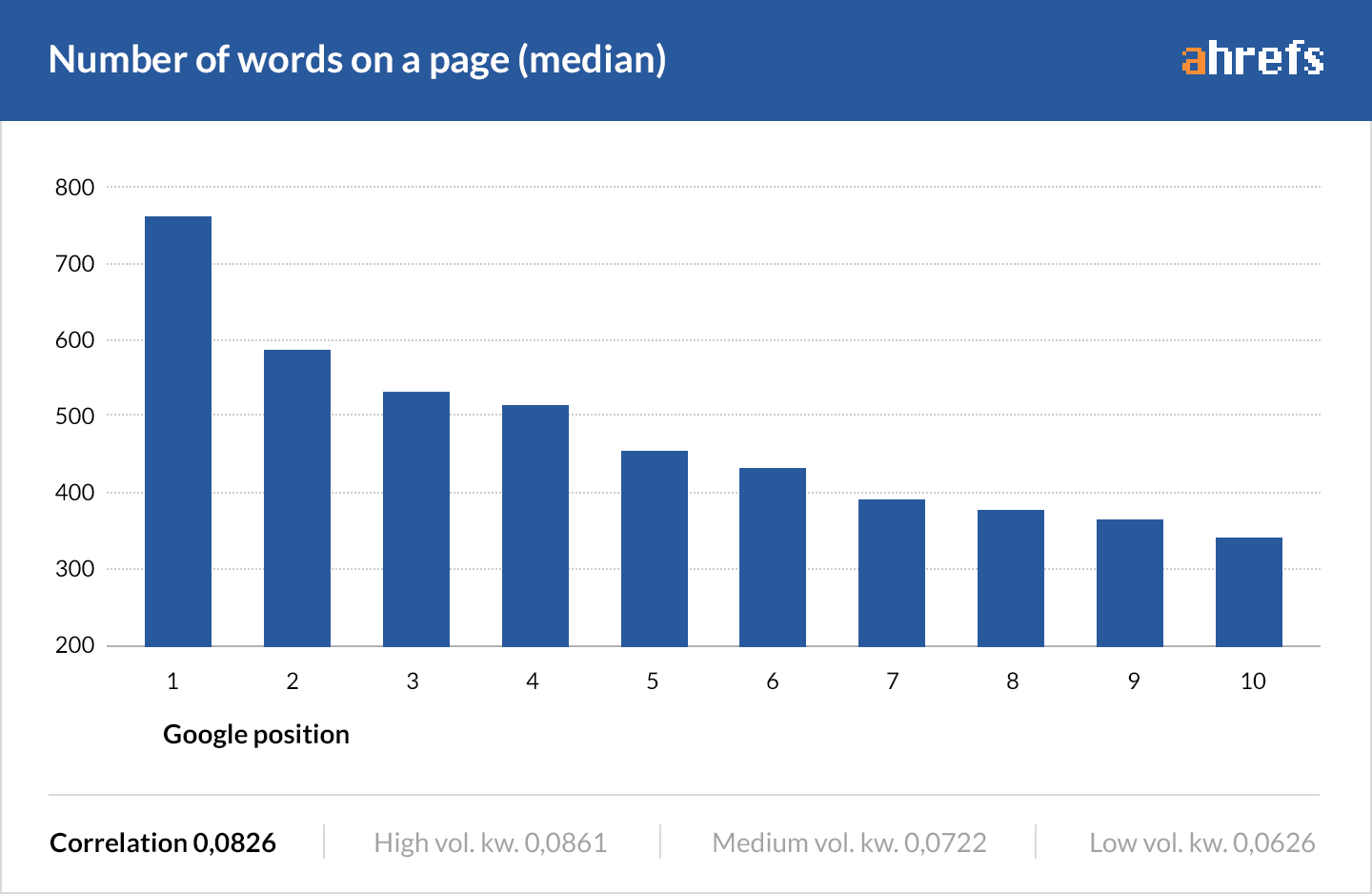
-
Content Freshness
Why is it so important to post quality content? By doing so, we are satisfying a humongous demand for relevant information while also carving a niche for ourselves as an authority on a specific subject. In order to stay current, you must revisit old posts and include any new information, data or statistics that you find relevant. Remember that different types of content demand varied levels of freshness and hence, it is imperative that you give this aspect of on-page SEO ample thought. Although posting every day would be super commendable, aim to post at least twice a week if you are busy. While Google gives preferential treatment to content that falls under the breaking news category, it is absolutely crucial that there is no duplicate content on your site. Here is what Google’s Matt Cutts has to say on Content Freshness

-
Use of Internal Linking
One of the key elements of on-page SEO, internal linking is the key determiner of how accessible your Web pages are. Well-executed internal linking allows search engines to know about your other Web pages and makes it easy for users to access those pages for more information. This way, users can spend more time on your website, which increases the possibility of their conversion.
-
Use of Schema When Necessary
Schema Markup plays a crucial role in helping search engines understand what your website offers. For instance, a search engine result page (SERP) with images, reviews, or ratings is much more attractive than a normal search result. It increases the clickability of the website. However, you should not use schema for every Web page. Only use it for the Web pages that you want to use to generate more traffic or the ones that have enough relevant information to be presented in the search results.
-
Use of Simple and Readable Content
One of the things many businesses get wrong is making high-quality content complicated. It defeats the purpose of attracting more views. Keeping the content readable and simple for any layman can prove to be a very helpful tool in increasing traffic to the website. If you’re wondering what role on-page SEO can play in this is, the answer is that it keeps the content accessible to viewers. For instance, if you have internally linked one of your Web pages in the content, then it is helpful in creating a buildup to the hyperlinked section. This gives the visitor an idea about what to expect from the content of the link provided.
-
Use of Alt Tags
Alt tags play a crucial role in serving the visually impaired or people with slower Internet connections. Providing a description for the images on your Web page can not only help this demographic of users but also help search engines determine the intent of the image. This can help boost your website’s ranking too.
Moreover, Google Images also indexes images based on their alt tag descriptions. That is why you should use alt tags to increase the organic traffic to your websites.
-
URL Structure
Short URLs are your best bet when it comes to on-page SEO best practices. As the first three to five words in a URL are given the most priority by Google, it makes sense to include the primary keyword close to the beginning of a URL. The URLs must have a well laid-out structure with lowercase letters and hyphens instead of underscores in between words. Although codes and ID numbers are a common component of URLs, they are best avoided. Using descriptive words to tell both search engines and users what the page is about is a better option. Besides these, appropriate interlinking within a website is another often-neglected way of drawing more web traffic while also signaling to Google about the ingenuity and intent of your page content. Simply remember to use links that are keyword rich and include at least two to five of them in every post. Here is a video from Google’s Matt Cutts who says it is good to have keywords in your URLs but the position of keywords in URLs is not a major factor.

-
Social Media Sharing
A higher click-through rate for your webpages simply means that a large number of users find your content worth reading. This, coupled with dwell time or the time they spend on your page are clear indicators of the relevancy and usefulness of your site to Google. If you constantly put out on-trend, share-worthy content that gets a lot of hits on social media channels like LinkedIn, Facebook, etc., the chances of someone linking to you from their high-authority site also increase. This again may lead to an improvement in organic search rankings. Hence, make sure to include social sharing buttons prominently alongside every impactful article that you post on your site.

-
Titles and Meta Descriptions
Title tags tell readers what the contents of a Web page might be. These are placed in the “header section” of each Web page and are prominently featured on search engine result pages (SERPs). Google has to know exactly what your Web page is about; hence, it is imperative that Title tags are always optimised with relevant keywords for the crawlers to understand.
Meta descriptions take this a step further by providing a summary of the Web page. It provides readers with a snapshot of the content on your Web page through the SERP itself.
-
E-A-T
Experience, Expertise, Authoritativeness, and Trustworthiness – These three parameters are used by raters on Google to assess websites, individual Web pages, and even content as a whole. Google rewards websites that produce high-quality content with high rankings. Hence, you must create an EEAT SEO guide for your content strategy to ensure that Google always marks the content on your website as high-quality.
Your content should display Expertise in its presentation of the subject matter. It helps build trust with the readers. It should be Authoritative in its suggestions to the readers to ensure maximum takeaway value. And lastly, it should be Trustworthy, supported by established sources as backlinks to ensure that there is little scope for readers to mistrust the information on your website.
-
Keyword Cannibalization
One of the most common mistakes a website can make is to become its own competitor. If your website has multiple pages that have been ranked for the same keyword, it means that your Web pages are competing with each other for higher ranks, which is not a good sign for your SEO. This is called keyword cannibalization.
Avoiding keyword cannibalization must be one of the topmost items in your on-page SEO checklist. Competing for the same keyword or phrase can confuse Google’s crawlers about the purpose of your Web page. This can drive down the ranking of your Web page significantly.
-
Content Audit
While creating fresh content is always a priority for websites, it is also important to ensure that existing content is audited at regular intervals. A content audit checklist must be created, which includes points like keyword intensity, updating the information to the most recent times, evaluating if the content is generating organic traffic, and so on.
Content audits are imperative for websites to maintain a streamlined SEO strategy implementation, as old Web pages with poor content can drive the overall traffic of a website down significantly. Regular content audits help websites figure out exactly what kind of ROI their content is generating so that future on-page SEO strategies can be planned in a much more focused and refined manner.
-
User Engagement
If users do not engage with your website, all your efforts are in vain. The main agenda of any SEO strategy is to ensure that users don’t bounce off your website, and actually stay and interact with your content. It all boils down to the quality and the relevance of the content being presented to the users.
User engagement also entails user retention, which is possible through on-page SEO techniques like content optimisation, internal and external linking, and site speed optimisation.
How to check your on-page SEO optimization?
There are many elements that go into the on-page SEO optimisation checklist. Here are some crucial factors you should look into:
-
Site Speed
The speed at which your website loads determines whether or not the user stays on your website. Using techniques like image optimisation, optimising the HTML code of the Web page, and cutting down on redirects, you can optimise your site’s loading speed.
-
Internal Linking
Ensure that your website is rich with internal linking, as it helps the crawlers to seamlessly explore your website, discover new content, and rank it on the SERPs. Moreover, it also makes it easier for users to access the breadth and depth of information on your website.
-
Image optimization
This is one of the most important on-page SEO techniques. Compressing the size of images on the website ensures that it loads faster. Moreover, you should add alt texts to the images so that crawlers can identify the context of the images and index them to improve your website’s rankings.
On-page SEO Tools
You can also use some on-page SEO tools that come with a wide range of uses to improve your SEO game. You can check:
- Yoast SEO
- Semrush
- Ahrefs Webmaster
- Google PageSpeed Insight
- Answer The Public
- Google search console
- Google analytics
- SERPism
- Google Trends
- Google Keyword planner
- Ubersuggest
- MozBar
These tools will help you better optimise your website and drive organic traffic and leads. You will have to try for yourself and discover how you can improve your ranking on search engines.
What’s the most important on-page SEO element?
There are many elements in on-page SEO. But content remains the most important one through and through. You might have carried out all the right activities for all the other elements, but as long as your content remains weak, none of it matters. Here are some of the activities you can carry out with your content to ensure this most important element in on-page SEO remains strong:
- Follow E-E-A-T guidelines
- Optimize content for keywords
- Make your content visually appealing by using images or other forms of media.
- Use proper subheadings (H1, H2, H3…)
- Use brief sentences and short paragraphs to improve readability.
What is On-Page vs Off-Page SEO
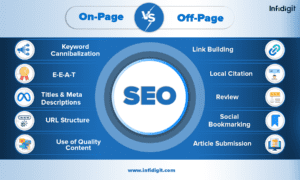
On-page SEO operates only on the website, and works to boost your website’s functionality and visibility to the search engines. It can include various activities like keyword optimization, alt texts, refining website structure, and more.
Off-page SEO is everything that happens outside of your website that can affect its rankings. It can include social media advertising, backlinks, local SEO, PPC, and more.
While it is imperative that your website is always at its ideal functionality which involves on-page SEO, it is also advised to keep off-page SEO activities in flow for desired outcomes. You need both of these to attain optimal rankings and visibility.
Summing Up On-page SEO
On-page SEO helps you build a loyal reader/customer/site visitor base with numerous repeat visits. This way, not only will word of your unique UX offering spread, but you will also be able to climb to the top of Google’s SERPs for important search keywords and stay there. If you are hungry for evermore on the latest in the world of digital marketing, keep coming back here often. Still, struggling to rank your website higher on Google SERPs? No Worries, we will help you to rank higher on Google SERPs via our SEO Services.
On-Page SEO Checklist for 2025
1. Content Optimization
- Match content to search intent (informational, transactional, etc.)
- Write high-quality, comprehensive content
- Optimize content for your primary keyword
- Use long-tail and related keywords
- Update old content with fresh information
2. Title Tags
- Include the primary keyword in the title
- Keep the title under 60 characters
- Make the title engaging and compelling
3. Meta Descriptions
- Include the primary keyword
- Keep the description between 120-160 characters
- Create an engaging, click-worthy description
4. URL Structure
- Keep URLs short, descriptive, and keyword-rich
- Use hyphens (-), not underscores (_)
- Avoid unnecessary parameters or numbers
5. Header Tags (H1, H2, H3)
- Use only one H1 tag, ideally your title
- Include your main keyword in the H1 tag
- Organize content with H2 for main sections and H3 for subsections
6. Image Optimization
- Use descriptive image file names with keywords
- Add relevant alt text to every image
- Compress images to reduce file size and improve load speed
7. Internal Linking
- Link to relevant internal pages with descriptive anchor text
- Ensure no broken internal links
- Use internal links to enhance content flow and user navigation
8. External Linking
- Link to high-authority, relevant external sites
- Avoid linking to spammy or low-quality sources
- Regularly check for broken external links
9. Mobile Optimization
- Ensure your site is mobile-responsive
- Test mobile-friendliness using Google’s Mobile-Friendly Test
- Optimize for fast mobile load times
10. Page Speed Optimization
- Compress images to speed up load time
- Minify CSS, JavaScript, and HTML files
- Use browser caching and GZIP compression
11. Structured Data & Schema Markup
- Implement structured data (e.g., article, FAQ, product schema)
- Test your structured data using Google’s Structured Data Testing Tool
- Optimize for rich results like featured snippets
12. User Experience (UX)
- Optimize Core Web Vitals (LCP, FID, CLS)
- Ensure easy site navigation
- Improve engagement by reducing bounce rates and encouraging interaction
13. HTTPS & Website Security
- Ensure your site uses HTTPS for security
- Install an SSL certificate to encrypt data
14. Social Sharing Integration
- Add social sharing buttons on your content
- Make sure buttons are visible but not intrusive
15. Continuous Monitoring & Updates
- Use Google Search Console to monitor performance
- Conduct regular SEO audits to find and fix issues
- Keep content fresh and up-to-date regularly
Frequently Asked Questions (FAQs)
Q.1. What is an on-page SEO checklist?
Several on-page SEO techniques can enhance your website’s performance. However, there are guidelines you should follow before implementing complex techniques. These guidelines are popularly practiced in SEO and are also known as an on-page SEO checklist. Here are a few important ones that you can keep in mind.
- Keep your URL short and sensible.
- Create an appealing title tag and include the target keyword if necessary.
- Write the meta description in active voice.
- Implement internal and external linking whenever suitable.
- Do not forget to add schema markup.
- Avoid stuffing keywords.
Q.2. What are the 3Cs of SEO?
To practice on-page SEO effectively, you need to remember the three Cs of SEO. Allow us to explain them in detail.
- Content
Search engines aim to provide helpful, high-quality content that answers the user’s search query most effectively. Thus, while implementing on-page SEO, you should keep your content clean, concise, and compelling.
- Code
One of the most crucial aspects of on-page SEO is coding. Since the entire website is built with the help of code, you have to ensure that it is easily interpreted by search engine bots. Maintaining a good taxonomy will make it more convenient for the bots to crawl through your website.
- Credibility
The reliability and trustworthiness of a website are determined by the quality of its backlinks. If the backlink on a webpage is of a high-quality website, it has more chances of getting recognised by search engines. This is an excellent on-page SEO technique.
Q.3. What are the 3 pillars of SEO?
The three main pillars of SEO are authority, relevance, and experience.
- Authority – A website with high authority ranks higher in the SERPs and contains quality backlinks.
- Relevance – If your website offers expertise in a certain niche, the search engine might trust you more with the content of relevant topics.
- Experience – If the visitors to your website are having a good experience, you are more likely to rank higher in the SERPs.
Popular Searches
How useful was this post?
5 / 5. 2












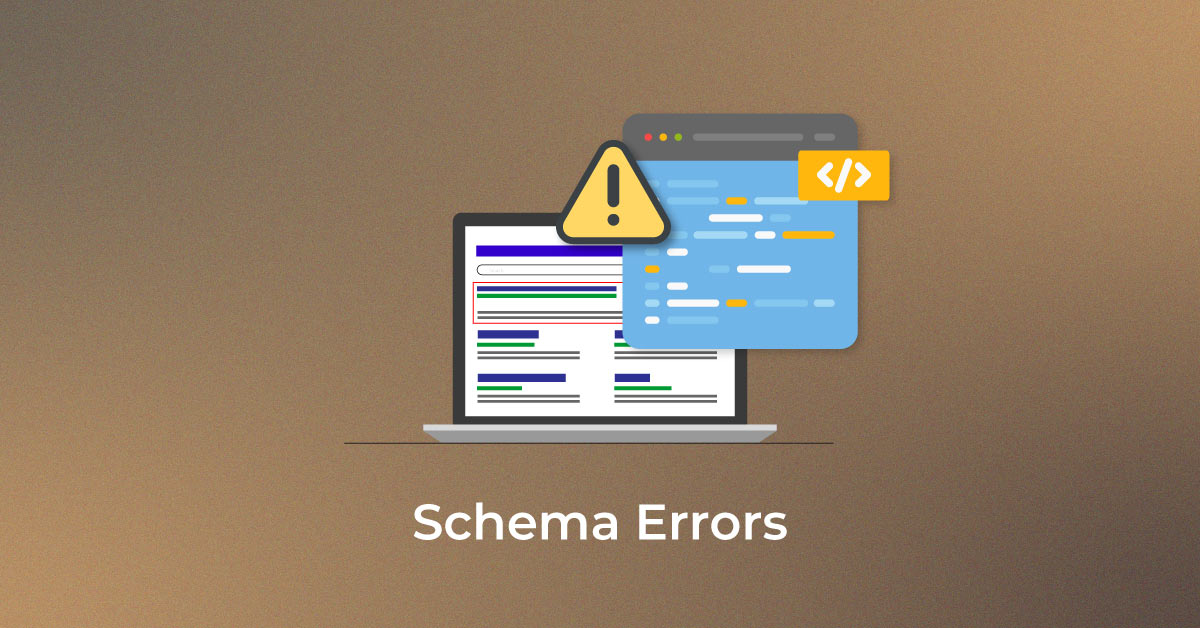
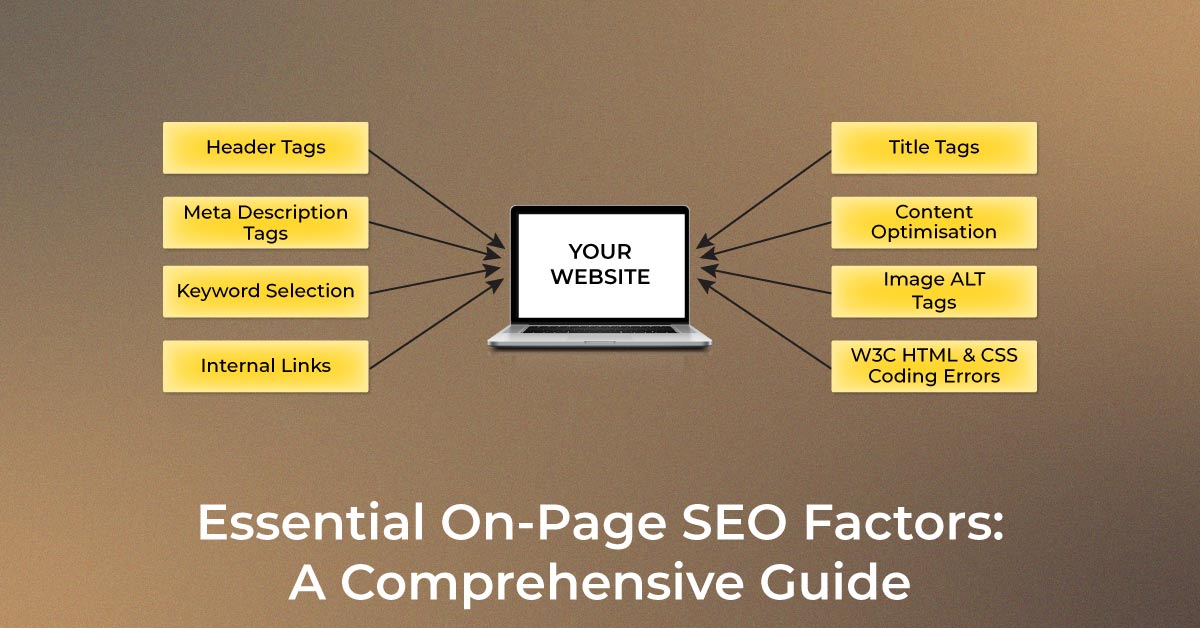
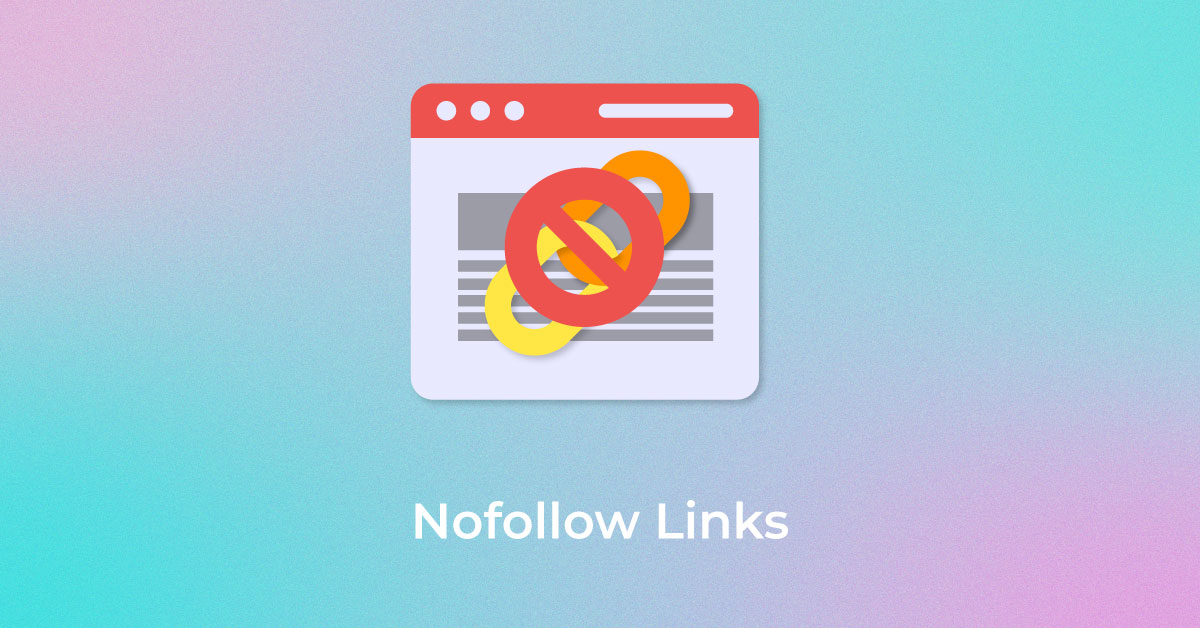
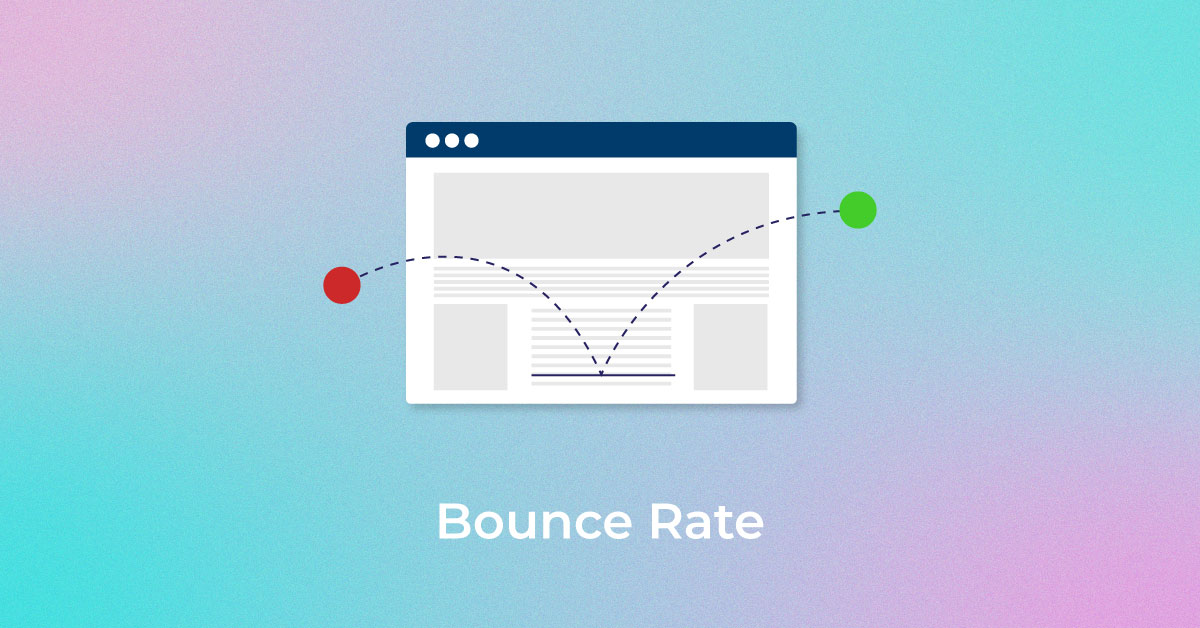


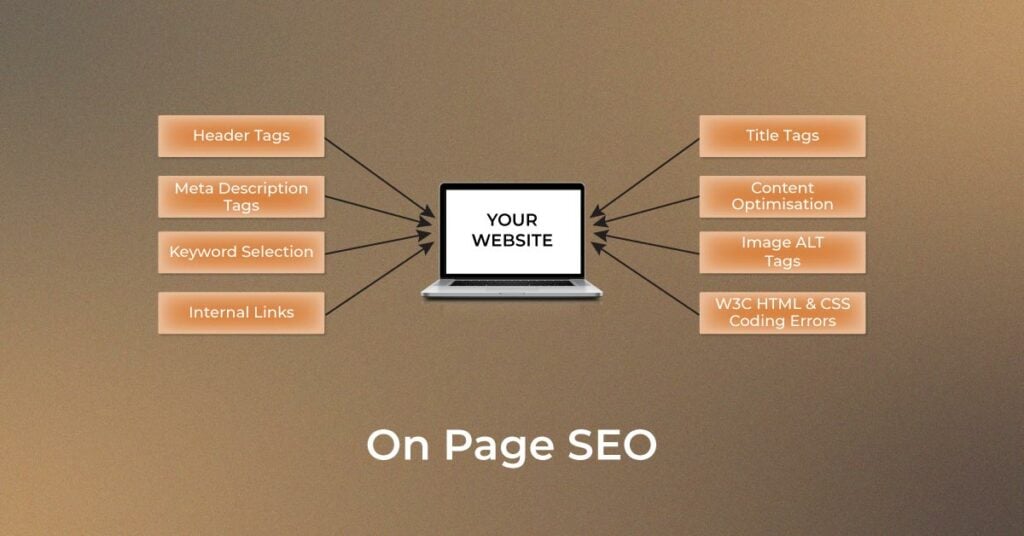
45 thoughts on “On Page SEO: Complete Guide & Strategies to Optimize Your Website”
Excellent blog about on-page SEO. Please add a few more additional on-page strategies. I missed AMP info in this content.
Thanks, BizDigitiz for liking our blog, surely we will be adding more on-page strategies and update them in our blogs section. Subscribe us for regular updates.
thanks for the wonderful information.
Thanks Jagannath for liking our On-Page SEO blog. We will be covering more SEO related topics in our SEO Blog section. Do Subscribe us for regular updates.
I love this step-by-step guide! You are awesome. Now, I’m going to follow the steps. I really appreciate this post.
Thanks Priya for appreciating our On-Page SEO blog. We will be covering more SEO related topics in our SEO Blog section. Do Subscribe us for regular updates.
On page SEO is best way to evaluate your business website and spot any kind of missing content and poor quality performance. It will suggest to fix things by providing appropriate solution. Not even content, but it also measures the performance of website and records how it is performing.
Very Rightly Said! On-Page SEO is the most important aspect of SEO. Do Subscribe to our blogs to get the latest updates on SEO.
Hi, This is very helpful and your post are always best, informative, provides excellence information.
Great work I like your post. Thanks
Thank you for liking our On-Page SEO blog. Subscribe to our blogs to stay updated with upcoming blogs.
As from my perspective working on-page factors to optimize your website you need to understand the concept of the on-page seo and how it works and what the factors need to work on it to make your website seo friendly. Correct implementation of on page factors can boost your website ranking soon.
Rightly Said! Correct Implementation of On-Page SEO would definitely help you to boost your ranking. Do check our blog on How to Optimize your website via SEO
Thanks for the amazing step by step information. I am naive in this domain and this blog is very useful for me to know about On-page SEO. Thanks for explaining the multiple things I’ll need in order to improve my on-page skills. I am working upon my keyword research part and was using KW everywhere extension of Chrome but now it is a paid tool. Do you have any other tool just like this one for keyword research?
Hey Nora, Thanks for Helping our On-Page SEO Blog. I hope this checklist would help you to improve your On-page Skills. On the keyword research question, you could use Wordstream & Semscoop tool. Though these tools have a daily limit but it could help you.
Great write-up, I am regular visitor of one’s website, maintain up the nice operate, and It’s going to be a regular visitor for a lengthy time.
Thank you for liking our blogs. 🙂
To get regular updates kindly subscribe us.
Thank you so much. That’s a wonderful post!
Thank you. Do subscribe us for more latest updates.
This is an amazing blog. You have mentioned all the most important techniques here. Worth to read!
Thanks 🙂
Thanks. Read our latest posts for more updates
worth sharing information
Thank you Jyoti for sharing your valuable feedback. Do subscribe us for more latest updates.
Thanks For Providing Best Article. You know when you post this valuable and informative article. I tells to my friends there are so many helpful People for us.
Thanks Krish for sharing your feedback. Glad to know you liked our post. Check out our latest posts for more updates.
Great content….thanks for the informative values.
Thanks Arti for sharing your feedback. Read our latest blogs for more updates.
It was really very high thinking content thanks a lot for sharing this information.
Hi Reyhan, thank you for sharing your feedback. Read our latest posts for more updates.
Hi, thanks for providing the amazing information. it’s a great write-up, This blog is very useful for me to know about On-page SEO. You have explained multiple things I’ll need in order to improve my on-page skills. keep sharing this type of information it’s very helpful for the beginners.
Thanks, Elena, for sharing your feedback with us. Check out our latest posts to improve your skills at a higher pace.
Thanks for sharing such good information.
Thanks, Ankit, for your appreciation.
thank you for on page SEO techniques, it help me lot …
Thanks for sharing valuable knowledge about on-page SEO.
Hey Ankit, thanks for sharing your feedback. Please check out our latest posts for more updates.
This helped me so much! It was the basis for my newest article, and I gave you a link back as my thanks. Thanks a ton! Amazing content. Very useful
Thanks, Jonaki. We are glad to know you liked our post. Please read our latest posts for more updates.
Nice information. Your blog shares unique details. Well, thanks for sharing!!!
Glad to know you liked our post. Subscribe to us for more latest updates.
Well Explained. One of the Great Blog on-page-SEO.
Thank you for sharing your feedback. Please read our latest posts for more updates.
Well explained Blog. Cover all the content regarding on page SEO
Thank you for sharing your valuable feedback. Check out our latest posts for more updates.
Wow, that was an amazing article about on-page SEO.
Well Explained. One of the Great Blog on-page-SEO.